• Rhamondre Stevenson faces more competition: The Patriots' offseason addition of Antonio Gibson means Stevenson will lose some of his route workload.
• Alex Van Pelt has a history with running backs: The New England Patriots‘ new offensive coordinator has helped four different running backs to top-13 fantasy finishes in his seven years as an offensive coordinator or running backs coach.
• Get a head start on fantasy football: Use PFF's fantasy football mock draft simulator to create real live mock draft simulations to get ready for your live draft!
Estimated Reading Time: 5 minutes
The fantasy football player profile series gives the most in-depth view of a player using the best data points at PFF’s disposal. We will look at how well the player has performed, what competition the player has for touches and how teammates and coaches will impact the player's performance.
Last updated: 7:15 a.m. Monday, July 15
Player Performance
Stevenson played well in 2021 and 2022, giving him top-10 potential heading into 2023. The Patriots allowed Damien Harris to leave in free agency prior to the season and replaced him with Ezekiel Elliott. Stevenson gained only one more route per game and less than a carry per game following the change, though. He stopped making as many big plays in the run game despite the offensive line playing better.
On the bright side, he did improve as the season went on. He averaged 3.3 yards per carry or less over the first five weeks, and 4.3 or better in his last four games. A high ankle sprain cost him the last five weeks of the season.
As obvious as this may sound, Stevenson is a good running back for fantasy football when things are going well and a bad one when they are not. His lack of efficiency could lead some to worry about his 2024 potential, but the Patriots just handed him a four-year, $36 million contract extension, which, at the very least, likely keeps him on the roster until 2026. He ranks seventh in total guaranteed money among running backs, with the six ahead of him having much higher average draft positions.

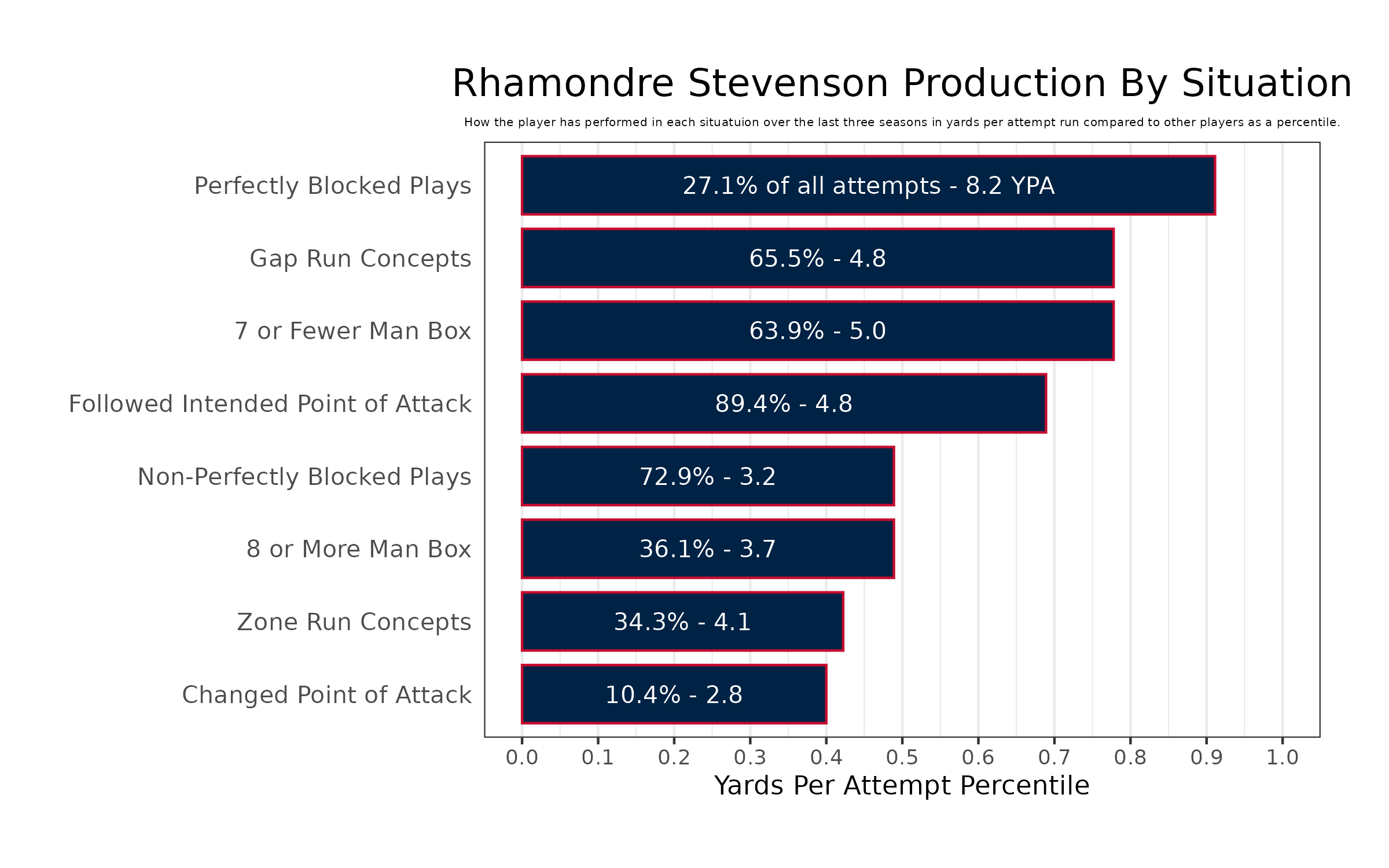
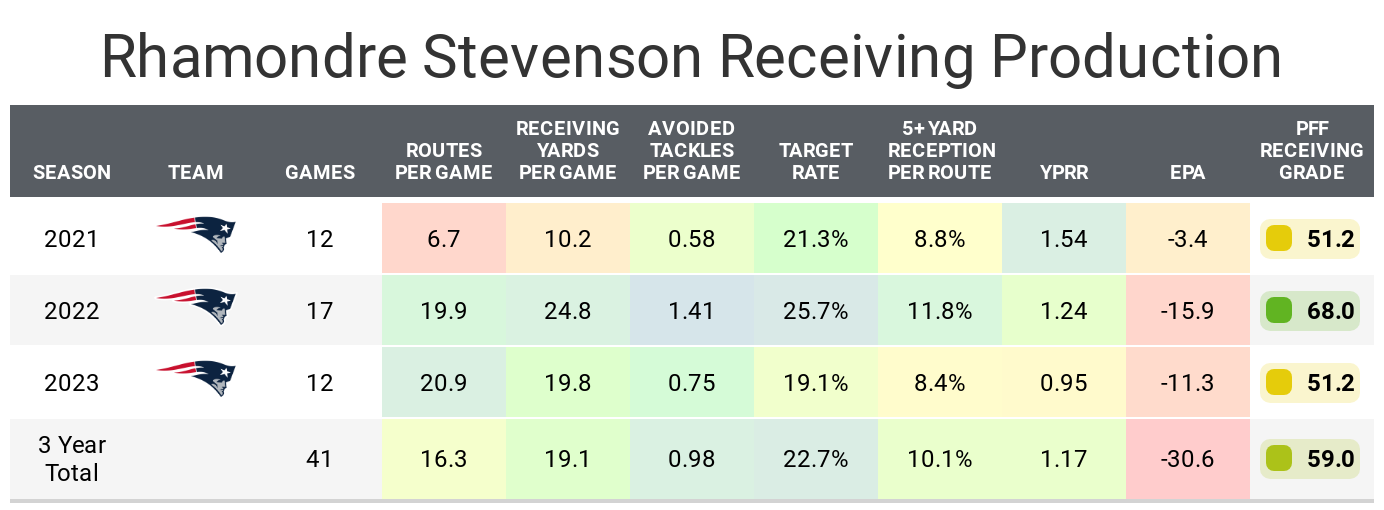
Competition for Touches
The Patriots opted not to re-sign Ezekiel Elliott this spring, instead adding Antonio Gibson on a respectable three-year, $11.25 million deal. Gibson’s contract was better than those of Zack Moss and Gus Edwards, two other running backs who switched teams this offseason and are expected to be starters.
Stevenson has been praised for his receiving ability, but Gibson has been a much more consistent receiver in the NFL. Gibson is also a capable runner. There is a good chance Stevenson will see a significant decrease in snaps on third downs and during two-minute drills, which are the roles he was used in most during the past two seasons.
Eighteen of Stevenson's 90 receptions over the past two seasons occurred on third downs outside of two-minute drills, and 17 came during two-minute drills. If he lost that role completely, he would lose 1.2 receptions per game. He would likely see some snaps in those situations rather than none.
In turn, he should get used slightly more on early downs, and especially more at the goal line. Gibson is also a capable goal-line back, so there is no guarantee that will be Stevenson’s role. But given each running back's contract, we would expect Stevenson to retain a large role in the offense.

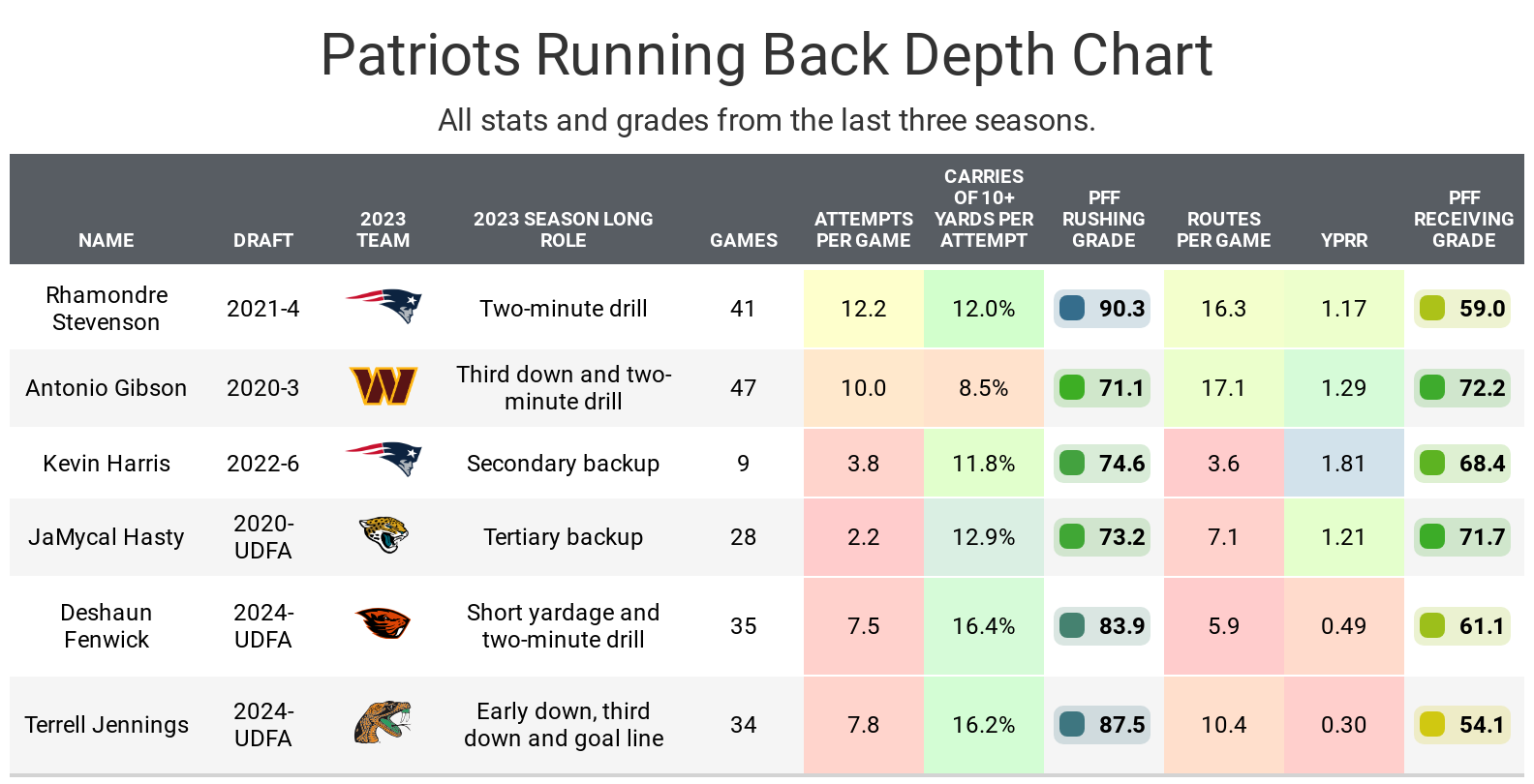
Impact of Teammates
The Patriots changed offensive coordinators, bringing in Alex Van Pelt. Given Van Pelt's experience with the Cleveland Browns, it wouldn’t be surprising if Stevenson has a Nick Chubb-like role and Gibson takes on the Kareem Hunt role.
The good news is that Van Pelt’s offenses in recent seasons ran a lot of plays, more so than expected. If the Patriots play as expected this season, we will see Stevenson increase his carries by one or two per game. If the Patriots exceed expectations, Stevenson may be running the ball 20 times per game.
Van Pelt was also the running backs coach for the Green Bay Packers for two years in which Eddie Lacy set career highs in attempts, yards and touchdowns and was RB7. In Van Pelt's one season as the offensive coordinator of the Buffalo Bills in 2009, Fred Jackson set career highs in attempts and rushing yards and was RB13.
The Patriots' offensive line could take a step backward this season after losing Trent Brown, who was both their best offensive lineman and their best run blocker.
The difference in Stevenson’s yards-per-carry figure on perfectly blocked plays and imperfectly blocked plays is larger than most running backs. Since he is likely to see more carries and fewer targets, his fantasy value will depend on his efficiency, which will depend on whether Cole Strange and Sidy Sow can decrease their negatively graded blocks.
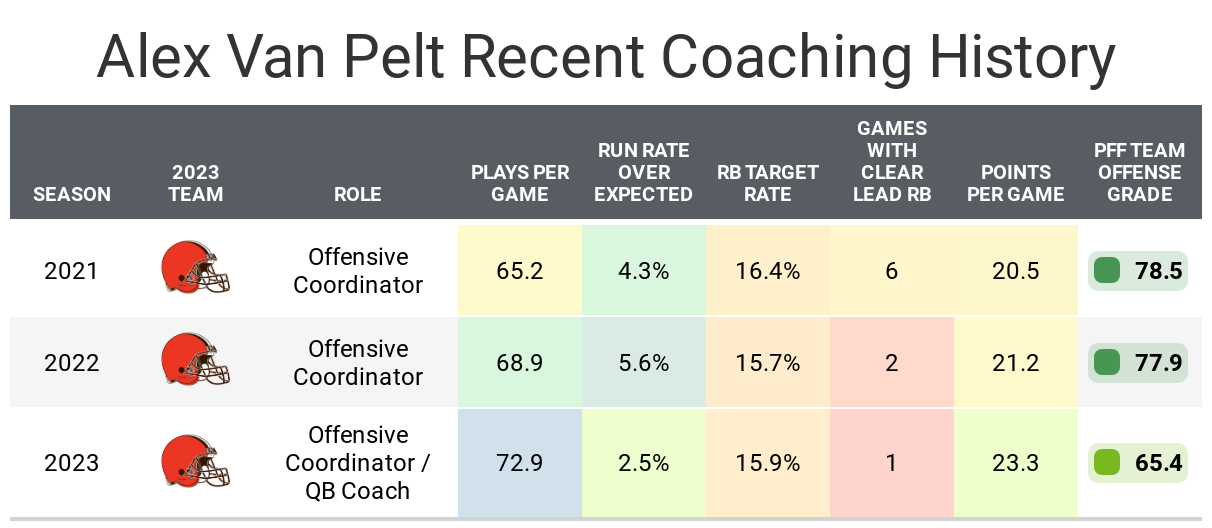
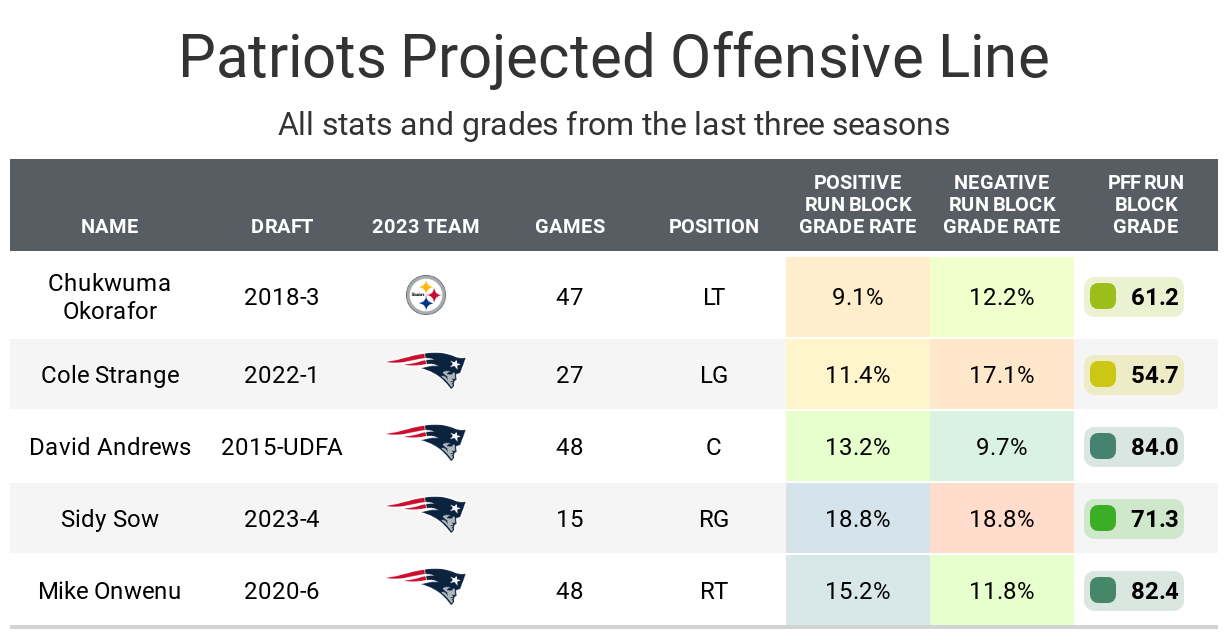
Bottom Line
A lot is working against Stevenson, including his down 2023 season, the addition of Antonio Gibson and the loss of Trent Brown. The most important thing a running back can do for fantasy football purposes is get volume, and chances are he will get volume after becoming one of the highest-paid running backs. He should be a fantasy starter, but a lot needs to go right for him to finish as a top-10 fantasy running back again. It would only take Antonio Gibson outplaying him for Stevenson to lose a lot of fantasy value.

Footnotes
- Statistics for the tables and charts were generally chosen based on their ability to predict future fantasy performance on either a per-game or per-opportunity basis, or chosen for their ability to describe the player relative to other players at the same position.
- Opportunities for this purpose are defined by passing dropbacks, rushing attempts and receiving routes run.
- Numbers are either by season or based on the past three years. For rookies, only college numbers are included. For non-rookies, only NFL numbers are included, even if they played in college in the past three years.
- Because college competition is relatively easier than NFL competition, most rookies will see a decline in their NFL numbers compared to their historical numbers.
- For all of the tables in this article, colors range from blue (good or high) to red (bad or low).
- All percentiles or colors are comparing the given player to other players with a large sample of opportunities. Generally, it’s one-third of the possible opportunities given the sample. If the player in question doesn’t have enough opportunities, they are still compared, even though a player could look very good or bad on that small sample size, which might not be as predictive.
- Information on running back utilization classifications and importance can be found here, wide receiver here and tight end here.




 © 2024 PFF - all rights reserved.
© 2024 PFF - all rights reserved.